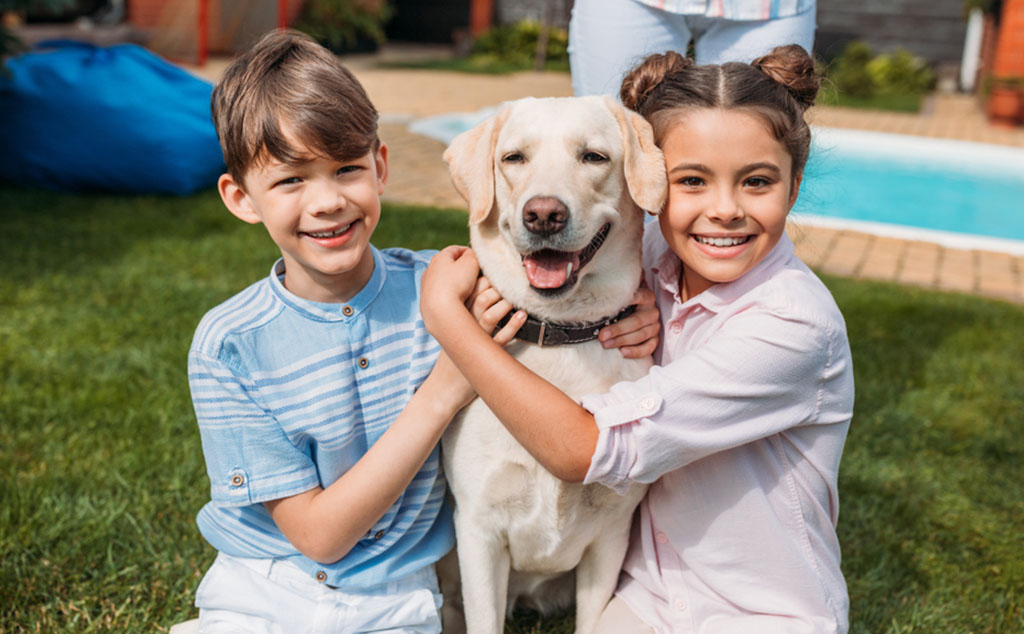
Choosing the Perfect Companions: The Best Pets for Families with Children
Bringing a pet into your home can be a transformative experience, especially when you have children. The right pet can teach responsibility, provide companionship, and contribute to a loving, nurturing environment. However, not all pets are created equal when it comes to families with children. In this guide, we’ll explore the best pets that seamlessly integrate into family life, fostering joy, and creating lasting memories.
1. Dogs: Man’s Best Friend and a Child’s Perfect Pal
Why Dogs? Dogs are renowned for their loyalty and affectionate nature, making them excellent companions for children. Breeds like Labrador Retrievers, Golden Retrievers, and Beagles are known for their gentle demeanor and patience, making them ideal family pets. Dogs also encourage physical activity through play, helping children stay active and fostering a strong bond between them.
Responsibility and Social Skills: Caring for a dog teaches children responsibility as they participate in feeding, grooming, and walking their furry friend. Dogs can also enhance a child’s social skills, as they often become a conversation starter among peers, promoting interaction and empathy.
Potential Downsides: While dogs are fantastic family pets, it’s essential to consider the time and energy required for their care. Some breeds may have high energy levels, requiring regular exercise and playtime. Additionally, allergies may be a concern for some families.
2. Cats: Independent Companions with a Soft Touch
Why Cats? Cats offer a unique kind of companionship, combining independence with moments of affection. Breeds like the Ragdoll, Maine Coon, and Persian are known for their gentle nature and adaptability to family life. Cats often find cozy spots to snuggle with children, providing comfort and warmth.
Low Maintenance and Comfort: Cats are generally low-maintenance pets, requiring less hands-on care than dogs. They are often content with indoor living, making them suitable for families in various living situations. Children can benefit from the calming presence of a purring cat, reducing stress and anxiety.
Potential Downsides: Cats may not be as interactive as dogs, and some breeds can be more reserved. Families should be aware of potential allergies and ensure that children understand the importance of respecting a cat’s boundaries.
3. Fish: A Splash of Color and Tranquility
Why Fish? For families seeking low-maintenance pets that still provide visual appeal, fish can be an excellent choice. Setting up an aquarium introduces children to the concepts of responsibility and routine care.
Educational Opportunities: Maintaining an aquarium can be an educational experience for children. They can learn about different fish species, ecosystems, and the importance of water quality. Observing the fish in their aquatic world can be both calming and fascinating.
Potential Downsides: While fish require less direct interaction, the initial setup of an aquarium can be a commitment. Additionally, parents need to supervise young children to ensure they don’t disturb the fish or the aquarium’s equipment.
4. Guinea Pigs: Furry Friends with Gentle Personalities
Why Guinea Pigs? Guinea pigs are small, gentle rodents with friendly dispositions, making them suitable pets for families with children. They are social animals that thrive on companionship.
Interactive and Social: Guinea pigs enjoy interaction with their human companions. Children can spend time playing with them, and the gentle nature of guinea pigs makes them well-suited for handling by kids.
Potential Downsides: Guinea pigs require a clean and well-maintained living environment. Families need to be prepared for regular cage cleaning, proper nutrition, and veterinary care. Additionally, guinea pigs may need a companion of their own kind to prevent loneliness.
5. Rabbits: Energetic Companions with Long Ears
Why Rabbits? Rabbits are intelligent, social animals that can form strong bonds with their human family members. They come in various breeds, each with its own personality traits.
Playful and Trainable: Rabbits are playful and can be trained to respond to commands. They enjoy interactive play and can become an integral part of a family’s daily activities.
Potential Downsides: Rabbits require a spacious living area, and their enclosures need regular cleaning. Additionally, they may be prone to health issues, such as dental problems, which require attentive veterinary care.
Conclusion:
Choosing the best pet for a family with children involves considering the family’s lifestyle, space, and the level of commitment they are willing to make. Dogs, cats, fish, guinea pigs, and rabbits all offer unique qualities that can enhance family life. Whether it’s the energetic playfulness of a dog, the independence of a cat, the calming presence of fish, the gentle nature of guinea pigs, or the playful antics of rabbits, the right pet can become a cherished member of the family, providing companionship, love, and valuable life lessons for children. Before bringing a new pet into the home, it’s essential for families to research and choose a pet that aligns with their preferences and capabilities, ensuring a harmonious and enriching experience for both children and their furry friends.



